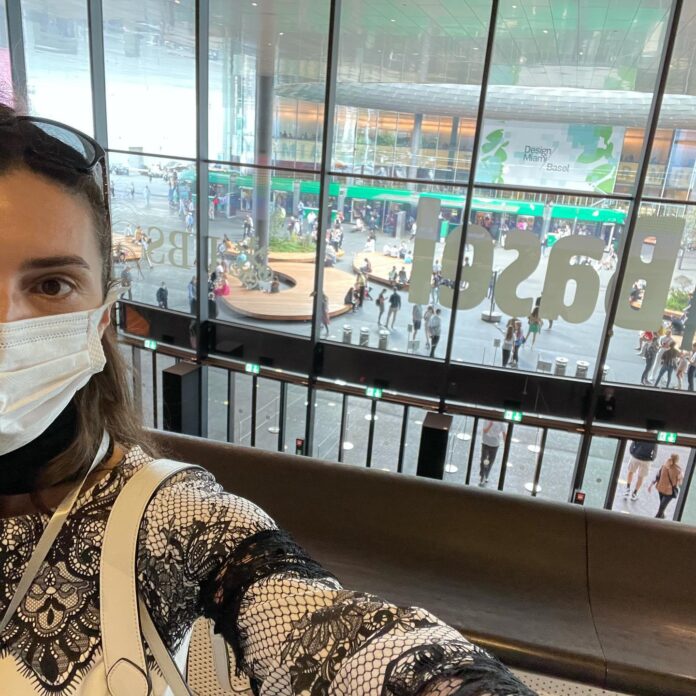Nosotros somos
Vástagos arrancados de las ramas en primavera
Nosotros somos
Frutos prohibidos
Nosotros somos
Ignorantes víctimas de una estéril felicidad
Nosotros somos
Sombras en busca de identidad
Nosotros somos
We are
Stems ripped from the branches in spring
We are
Forbidden fruits
We are
Ignorant victims of a fruitless happiness
We are
Shadows searching their identity
We are
A few lines, with a fast rhythm, like a chant pushed by a sudden unnatural and inappropriate acceleration. Inappropriate because it is uncomfortable, it hurts you. It is not a melancholy dirge. On the contrary, it is a punch, if not a knockout delivered mercilessly in the reader’s stomach and soul.
You will experience an unavoidable dichotomy. On the one hand you will be fascinated by this enthralling rhythm and by the warm simplicity of the words; on the other hand, you would prefer not to be ripped from the branches, especially in spring, when life blooms; he would prefer not to think that he is the unaware victim of a happiness that has no goals or purpose. Also, you wouldn’t feel yourself a mere shadow that paradoxically (as in the joneschian theater of the absurd) seeks his own identity.
But the reader is also struck by a saber that seems to contradict the whole pessimistic message, that is the message that you are a forbidden fruit. Here is an ill-concealed signal of drive, of passion of strength. As far as the author is involved, this saber brings back to her visual art, the pre-eminent field of her creative drive.
Nothing explicit in her art. There, too, the passion is poorly concealed in spite of the frequent pattern that she creates between blacks and reds which at first glance express strength, impetus, extraordinary expressive energy, but – when you overcome the wall – you realize that that energy is not abstract; you realize rather that it is physiologically connected to her deep Italian-Spanish fuego that makes the ideas and the language she pours into her art into a high tension.
This happens especially in her Radiographies that the public could the opportunity to see recently in the solo exhibition that Feuei Tola accomplished at the ex-Fornace of the Municipality of Milan. About this a brief reportage follows here.
Pochi versi, a ritmo serrato, come cantilena a cui è stata impressa un’improvvisa innaturale inopportuna accelerazione. Inopportuna perché scomoda, fa male. Non è una nenia malinconica. Al contrario è un pugno, se non un knockout sferrato impietosamente nello stomaco e nell’animo del lettore.
Egli vivrà una dicotomia insanabile. Da una parte sarà affascinato proprio da questo ritmo trascinante e dalla calda semplicità delle parole; dall’altra preferirebbe non sentirsi strappare dai rami, specie se di primavera, quando la vita fiorisce; preferirebbe non pensare di essere vittima inconsapevole di una felicità che non ha approdi né scopo, e tanto meno sentirsi mera ombra che paradossalmente (come nello joneschiano teatro dell’assurdo) cerca la propria identità.
Ma il lettore è colpito anche da una sciabolata che pare contraddica tutto il messaggio pessimistico: l’essere frutto proibito. Ecco un segnale malcelato di drive, di passione è tanto più forte quanto più è impedita o nascosta. Nel caso dell’autrice questa sciabolata riporta alla sua arte visiva, campo preminente della sua spinta creativa.
Nulla di esplicito nella sua arte. Anche lì la passione risulta malcelata a dispetto del pattern frequente che lei realizza tra i neri e i rossi che sulle prime esprimono forza, impeto, straordinaria energia espressiva, ma – poi superato il muro – ti rendi conto che quell’energia non è astratta; ti rendi conto piuttosto che essa è fisiologicamente connessa al suo profondo fuego di italo-spagnola che rende ad alta tensione le idee e il linguaggio che lei riversa nella sua arte.
Questo accade specialmente nelle sue Radiografiche che il pubblico ha potuto vedere recentemente nella mostra personale che Feuei Tola ha realizzato all’ex-Fornace del Comune di Milano di cui segue qui un reportage sintetico. (c.s.)
Radiografiche Introspettive, reportage di una mostra personale








